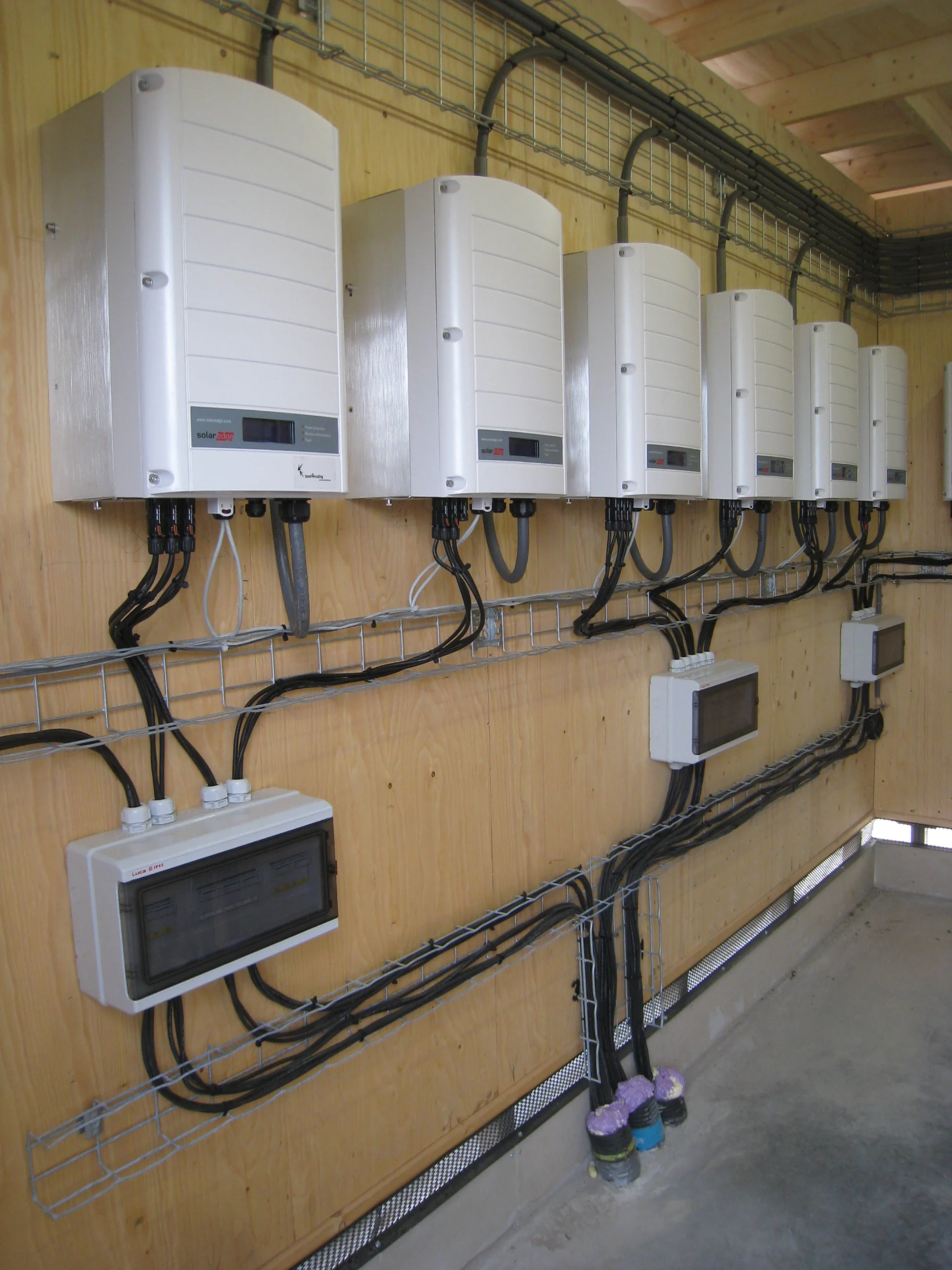Floating solar PV system - De Krim Resort
Installation Date: August, 2017
De Krim Resort, Texel Island,
Floating PV Design: Solar Float
780 kWp
Modules: 2390 x 327 Wp
Power optimizers: 1195 x P800
Inverters: 24 x SE27.6K
Floating solar PV installation on a 7728 sq. meter rainwater reservoir
The floating installation covers the majority of the water surface, reducing fresh water evaporation and growth of algae on the water surface
When the De Krim Resort decided to become more energy independent their requirements were the generation of green energy and an installation that would not be visible from the street level. The tender was awarded to Solar Float as a result of our unique proposal with low height and high output to place floating PV modules on the rainwater reservoir that is used to irrigate the resort’s golf course.
This novel approach resulted in a number of unique benefits for the resort and the installation also qualified for an incentive program from the Dutch government (SDE+). The resort outputs the solar power that it generates to its local public grid provider.
24xSE27.6K inverters, installed next to the pond.
The installation includes 1195 power optimisers which reduce module-level mismatch, maximising the energy collected from each module.
Floating PV system Installation - Cost-effectiveness and increased yield
The placement of PV modules on the reservoir creates revenue from a property asset that would otherwise have had no financial yield. By repurposing the reservoir for the PV installation, the resort eliminated the need to allocate any costly land, and maintained the beauty of the surrounding environment. Because the PV modules cover most of the surface of the reservoir, they reduce the amount of direct sunlight hitting the water, bringing an added environmental and financial benefit.
When fresh water is protected from direct sunlight, there is a two-fold effect. First, there is a reduction in the plant and algae growth on the water surface, which, if untreated, can cause costly damage to pumps in irrigation systems. Second, there is a reduction in water surface evaporation, resulting in a preservation of valuable fresh water. As a consequence of this effect, the resort expects to reduce fresh water losses by up to 30%.
Based on a predicted PVsyst performance ratio of 0.9, the installation is expected to generate 700 MWh per year, however, the PV system performance should be improved by the natural cooling effect that occurs by placing the modules on the reservoir. This cooling effect has been shown to produce greater energy generation, and, based on results from previous installations, Solar Float expects that the floating solar installation will generate between 770 MWh and 800 MWh per year, some 10 - 15% more energy compared to a similar ground-mounted installation. This will offset the additional costs of installing a floating PV system.
Meeting the challenges of a floatovoltaic installation
Floating PV installations come with a great number of benefits, along with unique design and maintenance considerations. Modules and components must be attached to moorings. The fact that the modules are located on water makes on-site monitoring, maintenance of the installation, and the safety of maintenance personnel, potentially more challenging due to location and access issues. Solar Float has resolved these challenges by using a unique concrete mooring system that is completely walkable (unlike industry-standard plastic floats).
In addition, Solar Float integrates SolarEdge power optimisers to monitor the performance of modules and communicate performance data to the web-based SolarEdge monitoring platform. The use of these optimisers reduces the number of actual site visits needed by maintenance personnel, as well as the time spent on-site in each visit.
Design flexibility and superior safety
When working with SolarEdge inverters, SolarEdge power optimisers maintain a fixed string voltage, allowing installers greater flexibility with longer strings and strings of different lengths in order to design optimal PV systems. Modules positioned at different tilts and orientations cause energy losses when connected in a single string to traditional inverters. With the SolarEdge solution, energy yield from each module is optimised independently, eliminating these energy losses. In addition, every power optimiser is equipped with the SafeDC™ feature, which is designed to automatically reduce modules’ DC voltage to a safe level.
A technology solution for all environmental conditions
As De Krim Resort is located in close proximity to the sea, it was an important consideration to protect the PV installation from the effects of salt mist corrosion and other harsh environmental conditions.
Solar Float opted to install SolarEdge power optimisers and inverters together with humidity and salt-mist resistant modules. These components were mounted on saline-resistant frames on concrete pontoons in the reservoir.
SolarEdge inverters and power optimisers are designed to respectively meet IP65 and IP68 ratings for water and humidity resistance and are suitable for saline environments. SolarEdge’s exceptional module-level monitoring, design flexibility, and improved O&M throughout the system lifetime all further contribute to higher yields and reduced costs.
The SolarEdge monitoring platform dashboard shows status updates, alerts and other information transmitted from the site. Users can see the physical layout of the installation as well as detailed charts about system performance, reducing costs by enabling the remote monitoring of operations.






